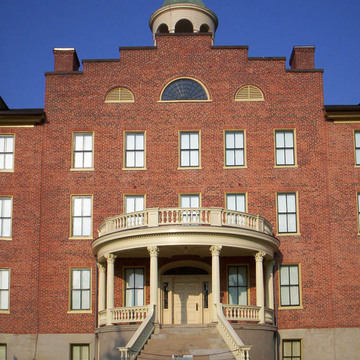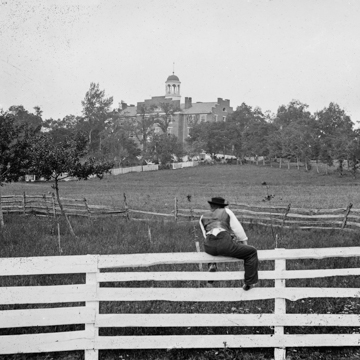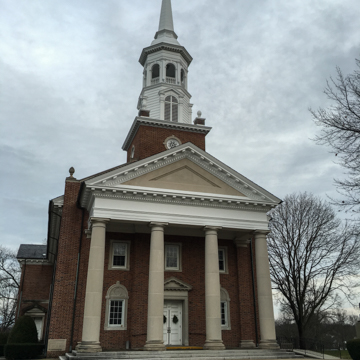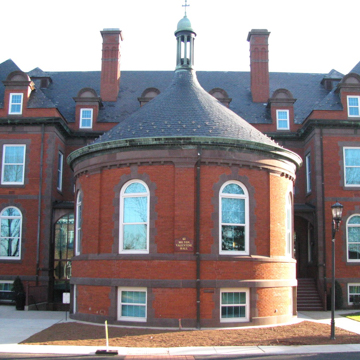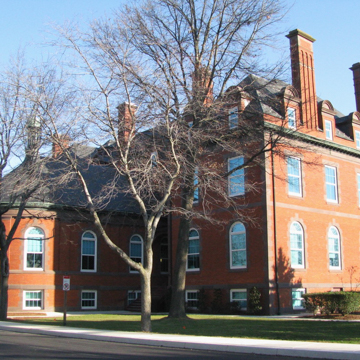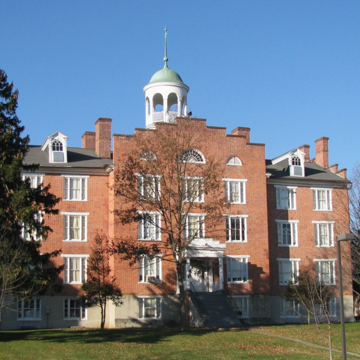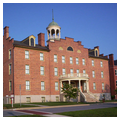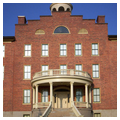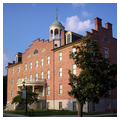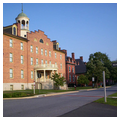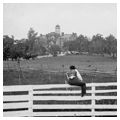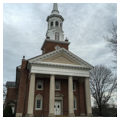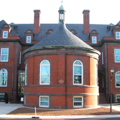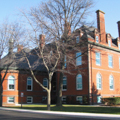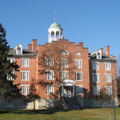Named for Samuel Simon Schmucker, the theologian who founded the seminary in 1826 and the adjacent Pennsylvania (now Gettysburg) College (AD10) a few years later, this handsome structure was built to house the first American Lutheran seminary. Like most buildings of its purpose, it encompassed all the college's functions from administration to dormitory, with classrooms in between. Designed by a Chambersburg architect, it is largely rooted in the by then old fashioned Federal style with a fanlight over the main door and a trio of lunettes, two adapted to serve as ventilators, in the stepped gable above the entrance, while single lunettes light the attic behind the stepped gables that terminate the ends of the building. An octagonal cupola capped by a small dome crowning the roof was used first by Union and later Confederate forces as a vantage point during the three-day battle. Since 1961, the building has been used by the Adams County Historical Society. The adjacent chapel (1940–1942) merges the general elevation of London's St. Martin-in-the-Fields with the spire of Philadelphia's Christ Church (PH4).
You are here
Schmucker Hall, Lutheran Theological Seminary
If SAH Archipedia has been useful to you, please consider supporting it.
SAH Archipedia tells the story of the United States through its buildings, landscapes, and cities. This freely available resource empowers the public with authoritative knowledge that deepens their understanding and appreciation of the built environment. But the Society of Architectural Historians, which created SAH Archipedia with University of Virginia Press, needs your support to maintain the high-caliber research, writing, photography, cartography, editing, design, and programming that make SAH Archipedia a trusted online resource available to all who value the history of place, heritage tourism, and learning.











